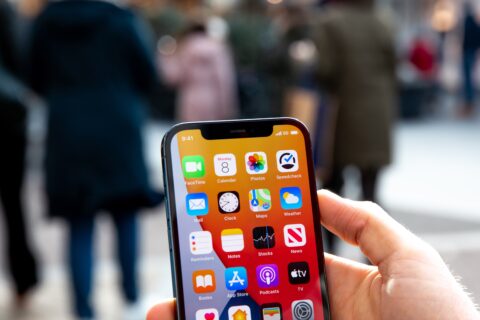
With 2024 behind us, it’s clear that digital transformation is not just a trend—it’s a necessity. The rapid adoption of technology has reshaped industries, enabling businesses to operate smarter, faster, and more securely. Organisations that fail to embrace digital advancements risk falling behind in an era where agility and innovation are key to survival. This article explores six key digital transformation trends that will dominate in 2025 and how businesses can leverage them for success.
Why Embracing a Digital-First Culture is Crucial in 2025
The post-pandemic world has permanently altered how businesses function. Digital transformation is no longer optional; it’s the backbone of efficient, scalable, and competitive organisations. The rise of AI-driven automation, edge computing, and cybersecurity measures means companies must invest in digital strategies to stay ahead.
According to Gartner, 91% of businesses are engaged in some form of digital initiative, yet only 40% have scaled it. Those who fully embrace transformation will gain a strategic advantage through improved customer experiences, operational efficiency, and future-proof security measures.
Top Digital Transformation Trends for 2025
1. 5G and Edge Computing Take Over
5G has become the standard, enabling faster speeds, ultra-low latency, and massive device connectivity. The widespread adoption of 5G technology is facilitating faster and more reliable internet connections, enabling advancements in IoT, augmented reality (AR), and virtual reality (VR) applications. Therefore industries such as healthcare and logistics are leveraging 5G for improved operations.
However, in 2025, its real impact will be seen in edge computing, where data is processed closer to the source rather than relying on centralised cloud systems.
Why it matters:
- Businesses can achieve real-time data processing for IoT devices, smart factories, and autonomous vehicles.
- Reduced latency improves video conferencing, AI-powered automation, and cloud gaming.
- Companies investing in 5G private networks will benefit from enhanced security and performance.
Qualcomm reports that 5G will contribute $13.2 trillion to the global economy by 2035, reinforcing its role in shaping the future.

2. Cloud Computing Evolves: Multi-Cloud & Serverless Growth
Cloud technology remains dominant, but in 2025, multi-cloud and serverless computing will take centre stage. Businesses are moving beyond single-cloud providers to hybrid and multi-cloud environments for greater flexibility and security.
Cloud infrastructure continues to evolve, with data centres transforming into AI factories where data is processed to generate valuable insights. This transformation is driving significant investments in digital infrastructure to support the growing demands of AI applications.
Key developments:
- Serverless computing minimises infrastructure management and enhances scalability.
- AI-driven cloud security prevents data breaches in increasingly complex environments.
- Edge computing integration allows businesses to process critical data locally while leveraging the cloud for analytics and storage.
Gartner predicts that by 2027, 90% of organizations will adopt a hybrid cloud approach. This projection underscores the increasing importance of hybrid cloud strategies in accommodating the growing demands of technologies like Generative AI.

3. Cybersecurity: Zero Trust and AI-Driven Protection
Cybersecurity is no longer just an IT concern—it’s a business priority. The rise of remote work and digital transactions has led to an increase in cyber threats. Implementing robust cybersecurity measures and adhering to data privacy regulations are essential to maintain customer trust and comply with legal requirements.
In 2025, Zero Trust Architecture (ZTA) and AI-driven security solutions will also dominate.
Key cybersecurity trends:
- Zero Trust frameworks require continuous authentication rather than relying on one-time verifications.
- AI-powered threat detection uses machine learning to identify and neutralise cyber threats before they cause damage.
- Confidential computing encrypts data while it’s processed, preventing breaches even if attackers infiltrate a system.
According to the Cybersecurity & Infrastructure Security Agency (CISA), 92% of security professionals say Zero Trust adoption is critical for business resilience.

4. Hyperautomation: The Next Level of AI & Robotics
Automation has advanced beyond basic process automation to hyper-automation, where AI, machine learning, and robotics automate complex workflows. By 2025, businesses will use hyper-automation to Optimise operations, improve decision-making, and enhance customer experiences.
How businesses are leveraging hyper-automation:
- AI-powered chatbots handle customer service inquiries 24/7.
- Automated document processing eliminates manual data entry and speeds up workflows.
- Robotic Process Automation (RPA) reduces finance, HR, and supply chain management errors.
According to ZedNet, 80% of organisations will already have hyper-automation on their technology roadmap by 2024.
5. AI-Powered Personalisation and Predictive Analytics
Artificial Intelligence (AI) continues to redefine business strategies, with predictive analytics and hyper-personalisation becoming essential. AI-driven algorithms analyse consumer behaviour to anticipate needs, tailor experiences, and Optimise marketing strategies.
Key AI advancements in 2025:
- Generative AI creates highly personalised content and product recommendations.
- AI-powered CRM tools help businesses enhance customer engagement.
- Predictive analytics enables companies to make data-driven decisions before trends fully emerge.
A report from Salesforce states that 74% of consumers expect companies to understand their needs, making AI-driven Personalisation a competitive advantage.
6. Internet of Behaviours (IoB) for Advanced Customer Insights
The Internet of Behaviours (IoB) transforms how businesses understand consumer habits. By leveraging smart devices, social media, and wearable data, companies can deliver hyper-targeted experiences and predict future behaviours.
Why IoB is game-changing in 2025:
- It enables businesses to create customised digital experiences based on real-time behavioural insights.
- Retailers can anticipate demand and Optimise inventory management.
- It improves fraud detection in financial transactions by analysing unusual behaviour patterns.
According to Verpex, 50% of the global population will use IoB-influenced services daily by 2025.
Stay Ahead with Datagraphic’s Digital Transformation
Digital transformation is evolving rapidly, and businesses must stay proactive to remain competitive. Whether adopting 5G, AI, cloud computing, cybersecurity, automation, or IoB, companies that leverage these trends will gain a strategic advantage in 2025 and beyond.
Need help navigating digital transformation? Explore Datagraphic’s Aceni application to streamline outbound communications and enhance operational efficiency without capital expenditure or lengthy projects.
There are many public and private sector organisations that have benefited from automation tools and delivering outbound communications digitally. Explore our case studies to see Aceni in practice.
FAQs
What is the biggest digital transformation trend in 2025?
AI-driven automation, cybersecurity enhancements, and 5G adoption will dominate digital transformation in 2025.
How does 5G impact digital transformation?
5G enables faster connectivity, improves IoT performance, and enhances real-time data processing for businesses.
Why is cybersecurity critical in digital transformation?
With increased cyber threats, businesses must implement zero-trust security models and AI-driven threat detection to protect sensitive data.
Have more questions?
Contact us to discover how you can future-proof your business with the latest digital transformation solutions.



